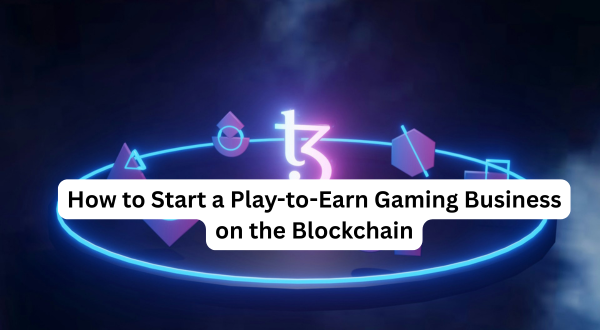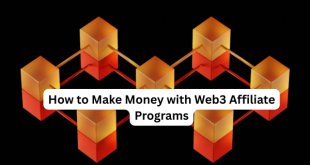The rise of blockchain technology has revolutionized the gaming industry. No longer are games just for fun — now they can be a source of real income. Play-to-Earn (P2E) gaming lets players earn crypto or NFTs with real-world value, and it’s creating exciting opportunities for entrepreneurs.
If you’re looking to build a blockchain-based gaming business, here’s a step-by-step guide to help you get started.
💡 What Is Play-to-Earn (P2E)?
Play-to-Earn is a gaming model where players earn digital assets, such as cryptocurrency or NFTs (non-fungible tokens), as they play. These assets can be:
- Traded for real money
- Used within the game ecosystem
- Sold on NFT marketplaces
Popular examples include Axie Infinity, The Sandbox, and Gods Unchained.
Step 1: Define Your Game Concept
Every successful P2E game starts with a compelling concept. Ask yourself:
- What genre will your game be? (RPG, strategy, sports, metaverse, etc.)
- How will players earn rewards?
- Will you use NFTs, tokens, or both?
- Will your game be mobile, desktop, or web-based?
Focus on a fun, engaging experience first — earnings should be a bonus, not the only attraction.
Step 2: Choose the Right Blockchain
Your game will need to run on a blockchain to manage assets and transactions. Popular choices include:
- Ethereum: Most established, but gas fees are high.
- Polygon: Ethereum-compatible, with lower fees.
- Binance Smart Chain (BSC): Fast and cost-effective.
- Immutable X: Ideal for NFT-heavy games.
- Solana: High throughput and low fees, growing rapidly.
Pick one based on your technical requirements, scalability needs, and community support.
Step 3: Design the Token Economy
Your in-game economy is the heart of your business. It must be:
- Balanced: Prevent inflation and hyper-earning.
- Sustainable: Incentivize long-term play and investment.
- Rewarding: Give players a sense of ownership.
You’ll likely need two tokens:
- A utility token for daily game actions.
- A governance token for community voting and long-term incentives.
Tokenomics should be mapped out clearly — consider hiring an economist or token specialist.
Step 4: Integrate NFTs
NFTs can represent characters, weapons, skins, land, and more. Decide:
- What NFTs players can own
- How they’ll be earned, traded, or upgraded
- Whether they are randomly generated (like loot boxes) or skill-based
Use smart contracts to mint and manage NFTs. Ensure compliance with the standards (ERC-721 or ERC-1155, for example).
Step 5: Build the Game
You’ll need:
- Game developers familiar with Unity, Unreal, or web frameworks
- Blockchain developers to write smart contracts
- Front-end/UI designers for a smooth user experience
- Backend engineers for APIs, user data, and game logic
Consider partnering with an existing Web3 game studio or hiring freelancers to reduce initial costs.
Step 6: Launch a Beta and Gather Feedback
Soft launch a beta version to test:
- Gameplay mechanics
- Wallet integrations
- Token/NFT functionality
- Bugs and exploits
Use testnets (like Rinkeby or Mumbai) before going live on the mainnet. Get feedback from early adopters and community testers.
Step 7: Build a Community
A strong community is essential. Use:
- Discord and Telegram for chat and support
- Twitter, TikTok, and YouTube for content and updates
- Reddit and Medium for in-depth discussion and guides
Offer rewards, airdrops, and sneak peeks to early supporters to build hype and loyalty.
Step 8: Monetize Your Game
Here are common revenue streams:
- NFT sales (initial drops and marketplace fees)
- Token launch and staking
- In-game purchases
- Sponsored content or brand partnerships
- DAO fees or taxes on peer-to-peer trading
Make sure you comply with regional regulations around crypto and gaming revenue.
Step 9: Stay Secure and Scalable
Blockchain games are frequent targets of attacks. Take precautions:
- Audit your smart contracts
- Use reputable wallet and token libraries
- Have a plan for scaling as user base grows
- Monitor gas fees and transaction times
Security is key to building trust with your users.
Step 10: Evolve and Update
Once live, continue improving:
- Add new levels, characters, and events
- Update NFTs with utility or rarity upgrades
- Listen to community feedback
- Keep marketing fresh and data-driven
The most successful games evolve with their players.
Final Thoughts
Starting a play-to-earn game on the blockchain is a major opportunity — but it requires planning, creativity, and a user-first mindset. When you get the gameplay, rewards, and community right, you can build not just a game, but an economy that thrives.
 UBUCH ubuch | Honest Tech Reviews & Tutorials for Everyone
UBUCH ubuch | Honest Tech Reviews & Tutorials for Everyone




